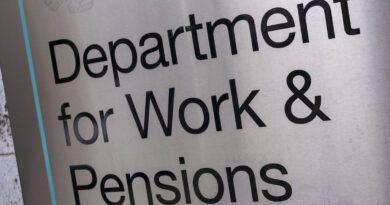Exact amount DWP will increase payouts for parents from April | Personal Finance | Finance
Millions of families are set for a cash boost after Chancellor Rachel Reeves confirmed during her Autumn Budget statement that benefit rates will rise again next year.
Benefits are usually uprated every April based on inflation statistics from the previous September. This year, the Consumer Price Index (CPI) inflation rate increased by 1.7 percent.
This means most Department for Work and Pensions (DWP) and HM Revenue and Customs (HMRC) benefits will receive a 1.7% uplift.
The move will see people qualify for hundreds of pounds more of support, depending on their circumstances.
Here’s a rundown of new payment rates parents can expect in April 2025.
Universal Credit
Universal Credit is a benefit distributed to people who are on a low income or are unemployed and need help with their living costs. How much a person receives depends on their individual circumstance, including age, whether they live in a couple, and whether they have children.
People receive a basic ‘standard allowance’, then additional amounts on top in accordance with the number of children they have, if they have disabilities, and so on.
The Government has been migrating people from six legacy benefits, including child tax credit, working tax credit, housing benefit, income support, jobseeker’s allowance, and employment and support allowance, to Universal Credit since the start of the year.
Nearly all new benefit claimants have been enrolled under Universal Credit, with the intention that everyone still receiving legacy benefits will migrate by the end of next year.
Like most benefits, Universal Credit rates will rise by 1.7% in April 2025. For joint claimants where one or both individuals are 25 or over, the standard allowance will rise from £617.60 to £628.099 per month.
Parents will also see an uplift in the monthly child element:
- For a first child born before April 6, 2017, the extra amount will be £338.99 (up from £333.33)
- For a child born on or after April 6, 2017, or a second child, the extra amount will be £292.81 (up from £287.92)
- For those with a disabled child, the lower rate additional payment will be £158.76 (up from £156.11), and the higher rate will be £495.86 (up from £487.58).
Child Benefit
Child Benefit is paid to anyone responsible for someone under the age of 16, or under the age of 20 if they are in approved education or training.
In the current tax year, it is worth £1,331 to households for the first child plus £881 for each additional child.
At present, the rate paid for the eldest or only child is £25.60 a week and £16.95 per additional child. After a 1.7% increase, the new rates from April 6, 2025, will be £26.04 for the eldest and £17.24 for each extra child.
Carer’s Allowance
Carer’s Allowance is a benefit distributed to people who care for another person (who receives certain disability benefits) for at least 35 hours a week.
At present, eligible claimants receive £81.90 a week. From April, this will rise to £83.29 a week.
The amount people can earn per week to qualify will also increase in April. At present, people can only qualify if they earn £151 or less a week after tax, National Insurance, and expenses. From April, this threshold will rise to £196 per week, marking the largest increase since the benefit was introduced in 1976.
Child Tax Credit
Child Tax Credit is expected to end in April 2025, meaning this benefit will not see an increase. Parents can instead apply for Universal Credit.
Maternity, paternity, adoption and shared parental pay
Statutory Maternity Pay (SMP) is paid for up to 39 weeks, which works out as 90% of the person’s average weekly earnings (before tax) for the first six weeks, and then £184.03 or 90% of your average weekly earnings (whichever is lower) for the next 33 weeks.
From next April, this rate will increase to £187.16 per week.
New mums who don’t qualify for standard maternity pay could be eligible for Maternity Allowance, which will also rise from £184.03 a week to £187.16.
The current statutory weekly rate of Paternity Pay, Adoption, and Shared Parental Leave Pay, is £184.03, or 90% of average weekly earnings (whichever is lower). These rates will also rise to £187.16 per week.
A new analysis by Policy in Practice found the total amount of unclaimed welfare benefits and support has increased to £22.7billion, up from £19billion last year.
The report estimates that over eight million people could be missing out on an average of £2,700 per year in rights-based benefits.
Claire Atchia McMaster, director of income and external affairs at anti-poverty charity Turn2us, said: “We encourage everyone to complete a regular benefits calculation to ensure you are accessing all available support.
“You can do this on both the Turn2us and Policy in Practice websites. In 2023, 60 percent of users on the Turn2us Benefits Calculator identified new benefits they were eligible for.”
People can click here to access the Turn2us and Policy Practice benefit calculators.




